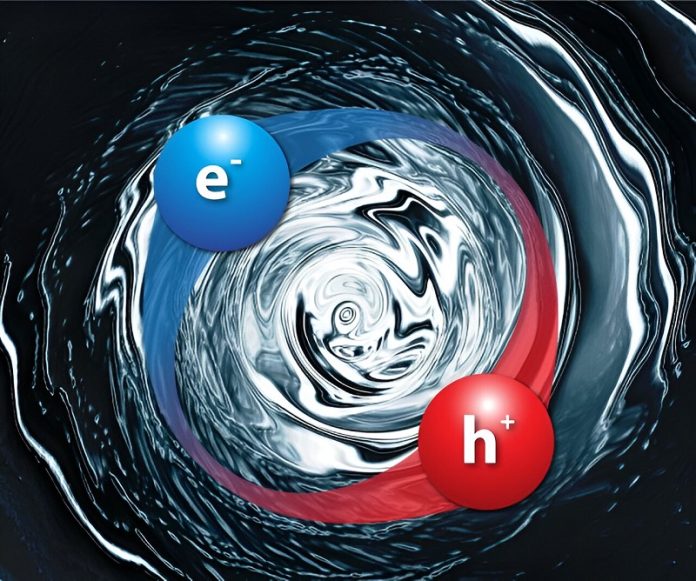
Researchers at the University of Oklahoma have made an exciting prediction about a new kind of particle called a “topological exciton” that could play a crucial role in the development of future quantum devices.
The study, led by Professor Bruno Uchoa and postdoctoral fellow Hong-yi Xie, was recently published in the journal Proceedings of the National Academy of Sciences.
Excitons are particles formed when an electron and its positively charged counterpart, called a hole, bind together.
These particles are important in the function of semiconductors and insulators—the materials that power our modern electronics.
Uchoa and Xie have now predicted the existence of a new type of exciton that has “finite vorticity” and can exist in materials known as Chern insulators.
Chern insulators are special materials that allow electrons to move along their edges but do not conduct electricity within their interiors. These edge movements create unidirectional currents that flow either clockwise or counterclockwise. The unique properties of Chern insulators make them interesting for researchers, especially because these currents are stable and precisely measured.
The exciting part of Uchoa and Xie’s work is that they predict that excitons created by shining light through these Chern insulators will inherit the unique topological properties of the material. This means that the new excitons, which they call “topological excitons,” would also have special, stable properties that could be used in advanced technologies.
One of the key predictions is that when these topological excitons decay, they will emit circularly polarized light. This characteristic could be incredibly useful in creating new optical devices. For instance, at low temperatures, these excitons could form a new type of neutral superfluid that might be used to create powerful polarized light emitters or advanced photonic devices crucial for quantum computing.
Uchoa is particularly excited about the potential applications of this discovery. These new topological excitons could help in the development of new optoelectronic devices and quantum communication tools. They might even be used to create qubits, the building blocks of quantum computers, which could operate based on the vorticity or polarization of the emitted light.
This groundbreaking research opens the door to a new era of quantum technology, providing a pathway to more efficient and powerful quantum devices. The prediction of topological excitons offers exciting possibilities for the future of quantum computing and communication.



